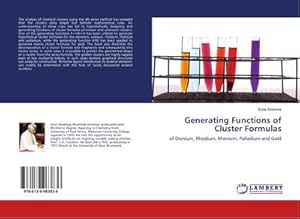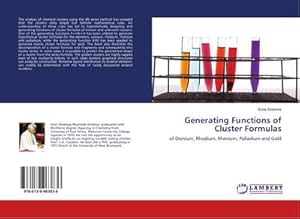Determined to Obey by Unknown (4 results)
Product Type
- All Product Types
- Books (4)
- Magazines & Periodicals
- Comics
- Sheet Music
- Art, Prints & Posters
- Photographs
- Maps
-
Manuscripts &
Paper Collectibles
Condition
Binding
- All Bindings
- Hardcover
- Softcover (3)
Collectible Attributes
- First Edition (1)
- Signed
- Dust Jacket
- Seller-Supplied Images
- Not Printed On Demand (1)
Free Shipping
Seller Location
Seller Rating
-
Second Breath Soldier
Published by An M.E. Gwynn Publication, 2021
ISBN 10: 1087982278ISBN 13: 9781087982274
Seller: Smartbuy, Einbeck, Germany
Book Print on Demand
Taschenbuch. Condition: Neu. nach der Bestellung gedruckt Neuware - Printed after ordering - He gave all to protect an innocent life, but his country wanted more!Barely surviving a cartel firing squad, Vincent Torres, aka, Griz, wished for death. But the U.S. government wasn't finished with him yet. The retired Navy SEAL, now facing traumatic injury and loss, is extradited to an unknown location, one long rumored to exist in the shadows. PATCH-COM. Back in the clutches of the military, he is involuntarily reinstated.Angry and lashing out, the Senior Chief is now the newest member of the same group of spec ops soldiers he'd mocked while undercover in Mexico. Caught between the instinct to rebel and the deeply ingrained training to obey orders, Griz finds himself summoned to assist in a CIA sting operation, and worse, forced to attend ballet class! Determined not to cooperate with either request, Griz's resolve falters when he meets his ballet teacher, Jessica Holiday.Beautiful, elegant, and way out of his league, the graceful woman's charms manage to soothe the savage Griz, spurring his desire to capture her attention. But obstacles block his path to happiness. The first is his own insecurity, and the second, an over-protective big brother.Ordered to stay away from teammate Ben Holiday's sister, Griz holds back, concentrating instead on the sting op to infiltrate a human trafficking ring in Las Vegas. Caught up in a bad plan concocted by the CIA and FBI, teammate Nastjia Moreno is sent in undercover. But even the best laid plans can go south! Unable to complete the mission as outlined and extract Moreno, the team must improvise. And when Jessica goes missing, Griz knows he must act fast.Hampered by his own injury and the CIA Agent bent on keeping secrets, Griz and his teammates must move quickly to rescue Jessica and save Moreno before both are sold on the black market and they disappear forever! 242 pp. Englisch.
-
Generating Functions of Cluster Formulas
Published by LAP LAMBERT Academic Publishing Dez 2018, 2018
ISBN 10: 6139963834ISBN 13: 9786139963836
Seller: BuchWeltWeit Ludwig Meier e.K., Bergisch Gladbach, Germany
Book Print on Demand
Taschenbuch. Condition: Neu. This item is printed on demand - it takes 3-4 days longer - Neuware -The analysis of chemical clusters using the 4N series method has revealed that the clusters obey simple but definite mathematical rules. An understanding of these rules has led to hypothetically designing and generating functions of cluster formulas of known and unknown clusters. One of the generating functions F=14n+0 has been utilized to generate hypothetical cluster formulas for the elements, osmium, rhodium, rhenium and palladium, while the generating function K(N) has been applied to generate mainly cluster formulas for gold. The book also illustrates the decomposition of a cluster formula into fragments and subsequently into cluster series. In some cases it is possible to predict the geometrical shape of a cluster from the series formula. The golden clusters are highly capped even at low nuclearity indices. In such cases isomeric graphical structures can easily be constructed. Tentative ligand distribution to skeletal elements can readily be determined with the help of newly discovered skeletal numbers. 88 pp. Englisch.
-
Generating Functions of Cluster Formulas : of Osmium, Rhodium, Rhenium, Palladium and Gold
Published by LAP LAMBERT Academic Publishing, 2018
ISBN 10: 6139963834ISBN 13: 9786139963836
Seller: AHA-BUCH GmbH, Einbeck, Germany
Book Print on Demand
Taschenbuch. Condition: Neu. nach der Bestellung gedruckt Neuware - Printed after ordering - The analysis of chemical clusters using the 4N series method has revealed that the clusters obey simple but definite mathematical rules. An understanding of these rules has led to hypothetically designing and generating functions of cluster formulas of known and unknown clusters. One of the generating functions F=14n+0 has been utilized to generate hypothetical cluster formulas for the elements, osmium, rhodium, rhenium and palladium, while the generating function K(N) has been applied to generate mainly cluster formulas for gold. The book also illustrates the decomposition of a cluster formula into fragments and subsequently into cluster series. In some cases it is possible to predict the geometrical shape of a cluster from the series formula. The golden clusters are highly capped even at low nuclearity indices. In such cases isomeric graphical structures can easily be constructed. Tentative ligand distribution to skeletal elements can readily be determined with the help of newly discovered skeletal numbers.
-
Limenheuretica [Greek], sive porluum investigandorum ratio. Metaphraste Hug. Grotio Batavo
Published by Ex officina Plantiniana apud Christophorum Raphelengium. Academiae Lugduno-Batavae Typographum, Leiden, 1599
First Edition
First edition. DETERMINING LONGITUDE IN THE RENAISSANCE . First Latin edition, extremely rare, of Stevin's highly important work on the determination of position at sea using the magnetic variation (or declination) of the compass needle, the angle between magnetic north and true north; since latitude was simply measured, this was tantamount to the determination of longitude. Originally published in Dutch as De Havenvinding, "the [Latin] translation appeared almost simultaneously with the original Dutch version" (Crone et al., p. 375); English and French translations followed later in the same year. "In a seafaring nation like the Dutch republic matters of navigation were, of course, of great importance. In addition to his astronomical works, Stevin . approached the subject of determining the longitude of a ship, a problem that was not fully solved until the nineteenth century. Several previous authors had suggested that longitude might be determined by measuring the deviation of the magnetic needle from the astronomical meridian, a suggestion based on the assumption that the earth-wide distribution of terrestrial magnetism was known. Since the determination of latitude was well known, such a measurement would allow the sailor to chart longitudinal position against the latitudinal circle. Stevin, in his booklet, gave a clear explanation of this method; he differed from Petrus Plancius and Mercator in that he did not rely upon a priori conceptions of the way in which geomagnetic deviation depends upon geographical position. Although he was willing to offer a conjecture about this dependence, Stevin insisted on the necessity of collecting actual measurements from all possible sources and urged the establishment of an empirical, worldwide survey. His method was sound, although as data began to accumulate it became clear that the magnetic elements were subject to secular variation. The problem of determining longitude was at last solved more simply by the invention of the ship's chronometer" (DSB). The Latin translation of De Havenvinding is important as the first edition to be published in a language understood throughout Europe, and hence is likely to have been much more widely read that the Dutch original. It also contains a fascinating dedication by Grotius, not of course present in the Dutch edition (or in the English and French editions). According to ABPC/RBH, in the last 50 years no copy of the Dutch or Latin editions has sold at auction; they list just the Macclesfield copy of the French edition, and the Streeter/Boies-Penrose copy of the English edition (sold Christie's New York, April 16, 2007, $36,000). OCLC lists no copies in US. "By the end of the sixteenth century the Dutch Republic had become a major sea power . It was thus understandable that the authorities in the Dutch Republic - Prince Maurice (1567-1625) and the States general - were greatly interested in a safe and speedy method of maritime travel. Maurice showed considerable enthusiasm for nautical affairs, and it is likely that he asked Stevin to prepare a study of the subject . "Stevin explains what he intends right at the start of the book. 'It is known,' he says, 'that for a long time past, principally since the great voyages to the Indies and America began, a means has been sought by which the navigator might know at sea the longitude of the place where his ship is at the moment in order thus to get to the harbours to which he wishes to go, but that hitherto it has not been possible to arrive at such accurate knowledge of the longitude. For some people, hoping to find it through the variation of the compass, ascribed a pole to the said variation, calling it magnetic pole, but it is found upon further experience that these variations do not obey a pole. Nevertheless the search for this has furnished a means for reaching a desired harbor, even though the true longitudes of both the harbor and the ship are unknown.' In navigation, the 'variation of the compass' is understood as the angle between the geographic and magnetic meridian. Gerardus Mercator (1512-94) and Pieter Plaetevoet (1552-1622), known as Plancius, a Dranouter-born pastor of the Reformed Church in Amsterdam, had written on the phenomenon of magnetic variation before Stevin, and he had tried to make use of it in practical navigation and in attempts at determining longitude. Stevin's aim was clearly much more modest: he sought to enable the seafarer to reach a given harbor without having recourse to longitude. "Moreover, Stevin was not convinced of the existence of a magnetic pole, conceived as a rock located somewhere in the Arctic. In De Havenvinding he makes no attempt to explain the variation of the compass needle or terrestrial magnetism in general, as his predecessors Plancius and Mercator had done. But he did make a thorough study of the observational data Plancius had collected and expanded on them. "Plancius assumed that there were four meridians on earth where the variation was zero: the prime meridian, which at that time passed over the island of Corvo in the Azores, and the meridians of 60°, 160° and 260° east longitude. In each of the four lunes into which these meridians divide the earth's surface, the needle is supposed to deviate from magnetic north in the same way. That is northeasterly in the lunes I (0-60°) and III (160-260V), and northwesterly in the lunes II (60-160°) and IV (260-360°). The northeasterly variation would increase in lune I from 0° to 30° eastern longitude and decrease from 30° to 60° and so on. Stevin concurred with Plancius as regards lunes I and II, for which there existed sufficient observational data, but in place of four agonic lines [meridians of zero variation] he introduced six, at 0°, 60°, 160°, 180°, 240° and 340°, and cautiously presented his system as conjecture or supposition. Although Stevin criticized certain aspects of Plancius's work and used his method in a more restrained form, he made no attempt to hide his admira.





![Seller image for Limenheuretica [Greek], sive porluum investigandorum ratio. Metaphraste Hug. Grotio Batavo for sale by SOPHIA RARE BOOKS](https://pictures.abebooks.com/inventory/md/md31000838652.jpg)